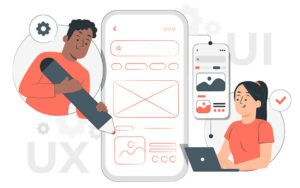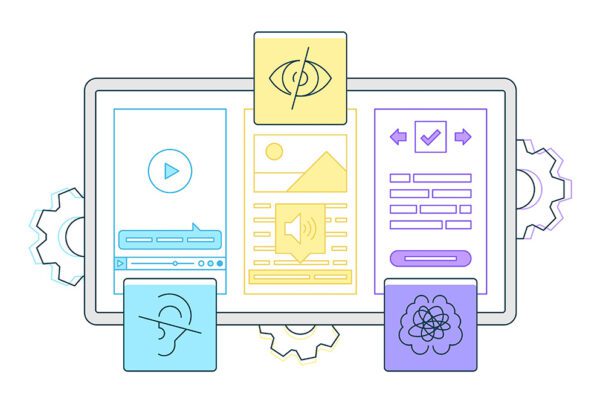Great business websites deliver high-quality user experiences. While exactly what constitutes a great experience is hard to define, the two most important components are performance and aesthetics. Without both — fast, fluid performance to keep users on your site and compelling design to drive interest and emotional connection — visitors either bounce right off to a smoother-running competitor or simply feel underwhelmed with what you have to offer and leave unsatisfied.
From a developer’s perspective, however, performance and aesthetics in web design are often at odds with each other. Features intended to enhance the user experience aesthetically such as high-resolution images, embedded video, and dynamic page elements (think movement) cause pages to load slower. A clunky user experience due to either page loading times or an excess of visual features adding clutter quickly drives away potential customers.
For example, pages that load in two seconds rather than one experience nearly a 50% drop — from 30.5/1000 to 16.8/1000 — in sales and conversions in just that additional second. On the other hand, visitors form a first impression of a site in just 2.6 seconds and 40% will not interact with any page elements if they consider the visual layout unattractive. The key then for user experiences that translate into sales and conversions is striking the right balance between slick, seamless performance, and aesthetic design that communicates authority and authenticity.
Finding the Balance
The trick to balancing objectives that pull in different directions is often to focus on what you want to happen — in this case satisfying user experiences and conversions — rather than simple metrics like speed and number of features. With that in mind, here are three user-experienced-focused priorities to target in website design.
1. Ease of Use
Visitors come to your site through a variety of pathways — organic search, social media ads, or even searching for your business specifically based on a referral. This means that visitors arrive on your site at different stages of familiarity with your brand. This knowledge should inform your site design.
Does everything a visitor needs to know to take the next step of the customer journey — how to create an account, add an item to a cart, or open product reviews — appear in the first browser rendering without them having to scroll? Is your page optimized for mobile viewing? With mobile devices accounting for 55% of internet browsing and 59% of consumers making purchase decisions based on mobile accessibility, successful business websites should cater equally to the mobile browsing experience. In practice, this means constructing your most important page layouts to communicate conversion-driving information at the top of the page for both mobile and desktop.

2. User Purpose
Not every page on your website has to load at the exact same speed. You can design for speed optimization in different degrees depending on what user activity is most likely occurring when a page opens.
For example, page speed matters most on pages where users land first. Many visitors opening your home or product pages will be forming first impressions of who you are and what your business has to offer. For first impressions, it’s critical to keep load time fast so that visitors decide to engage further with your site.
As a general rule, you should focus on keeping landing pages in the 1-2 second range for loading times. However, the deeper a visitor goes into the customer journey — creating an account, reading reviews, opening detailed product content like videos or eBooks — the more patience they have to see high-quality content. Once visitors have crossed the hurdle of initial conversion, you have more leeway with page design and can build in heavier features that load a little slower or require scrolling to experience.

3. Optimizing Performance
Knowing that you can optimize for speed and performance in varying degrees, what are the most practical steps you can take to improve performance where it matters most? To enhance performance across your site equally, you can leverage the following techniques:
Note: we’re about to get techy in this section. If you have questions about optimizing your site’s performance feel free to give us a call. Our experts are happy to talk through what might make the most sense for your organization and your website. If you want to get down in the weeds on website performance metrics, please continue reading!
- Use a content delivery network: Content delivery networks (CDNs) are geographically distributed server networks that improve performance and availability for websites. Although the internet often seems completely abstracted from physical resources, the location of servers delivering web content still causes delays and affects page speeds. Choosing a CDN that serves the regions that account for most of your traffic can shave critical second fractions off average loading times for most users.
- Reduce JavaScript dependency: JavaScript enables interactivity in web pages. Whenever you can change elements on a page without refreshing the browser, that’s JavaScript at work. On average, JavaScript accounts for 35% of total page size and often includes significant code-bloat that better design can reduce. To reduce JavaScript dependency, developers can compress JavaScript files, run the latest versions of HTML and CSS, and use asynchronous loading for non-essential JavaScript features.
- Cache page resources: Caching stores page resources in the user’s browser, eliminating the need to fetch the same resources multiple times. Developers can cache larger static assets — those that aren’t frequently modified either server or client-side — and assets shared in multiple page layouts to improve site performance as visitors move through multiple pages or return on different visits.
Striking a balance between aesthetics and performance for your website can be tricky, but the results including a functional site that your users love.
Start the Conversation
Interested in learning more about how we can help support your website?



